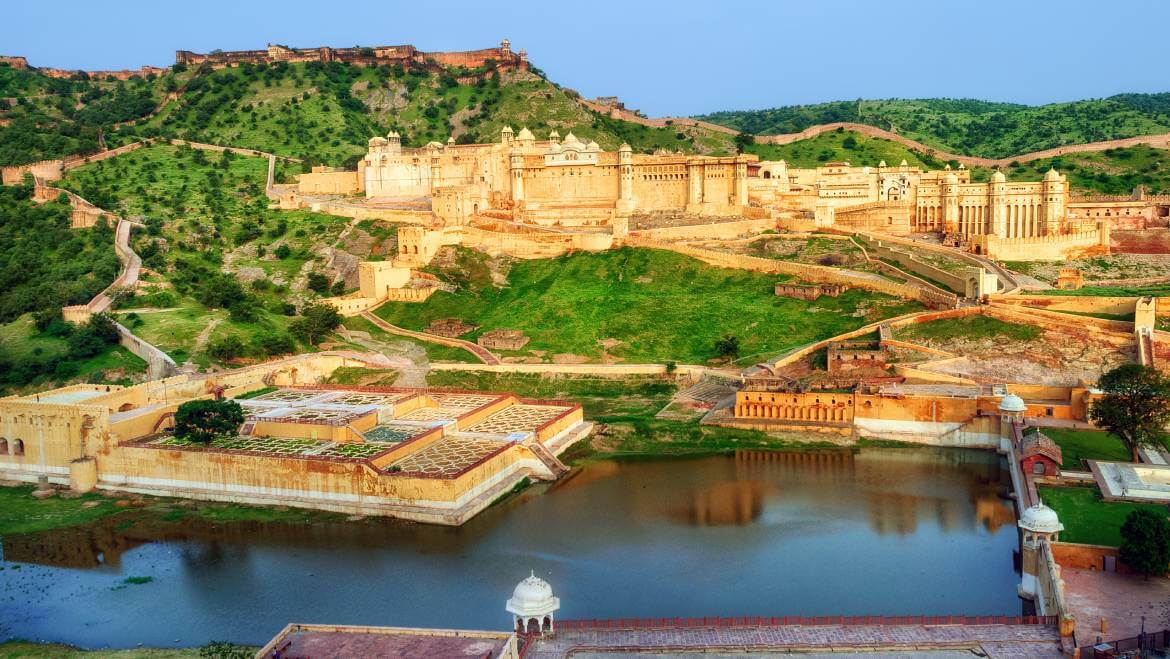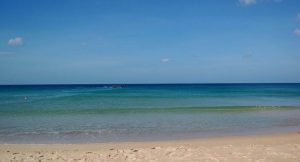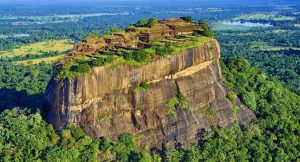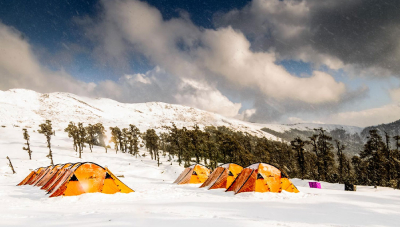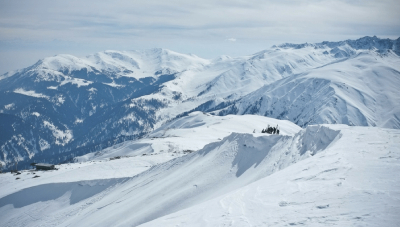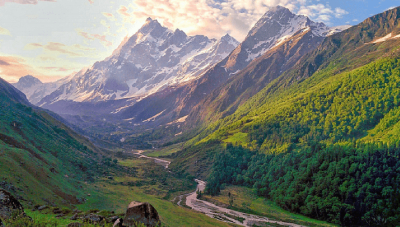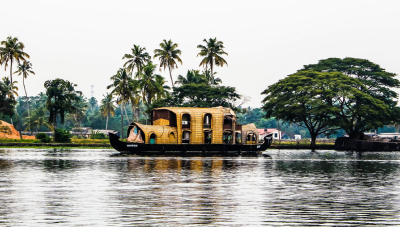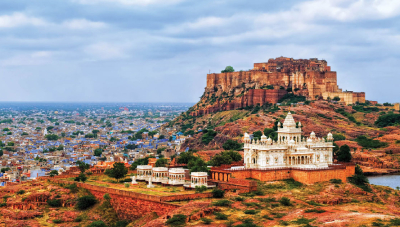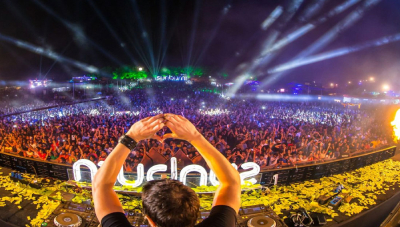The land of India has been embellished with some of the most majestic forts in the world. Reflecting a rich culture, history and a good taste in architecture, these massive forts take one back in the glorious time of Maharajas and Emperors, where each bastion, window, porch, courtyard and even the outer wall recount historic tales. Done up in such a way with fine mosaic, frescoes, latticework, one cannot help but fall in love with these stunning pieces of architecture that India is so proud of.
The magnificent forts of India not only showcase artworks but they also depict stories that will surely teleport you to the lands of Maharajas and Emperors. These forts of India also create a major portion of heritage tourism in India, which is referred to as heritage tourism, and believe it or not these points of attraction pull throngs of travellers from all across the world. Here’s the list of 20 biggest forts in India, which you must see once in your life.
List of 20 Popular Forts in India (State-Wise):
| States |
Forts |
| Rajasthan |
Mehrangarh Fort, Jaigarh Fort, Jaisalmer Fort, Chittorgarh Fort, Junagarh Fort, Amber Fort, Nahargarh Fort |
| Madhya Pradesh |
Gwalior Fort, Holkar Fort |
| Uttar Pradesh |
Red Fort Agra, Jhansi Fort |
| Delhi |
Red Fort, |
| Maharashtra |
Daulatabad Fort, Panhala Fort, Sindhudurg Fort |
| Telangana |
Golconda Fort, Warangal Fort |
| Himachal Pradesh |
Kangra Fort |
| Karnataka |
Srirangapatna Fort, Chitradurga Fort |
Also Check Out: Popular Heritage Tour Packages in India
Mehrangarh Fort, Jodhpur, Rajasthan: The Sun Fort
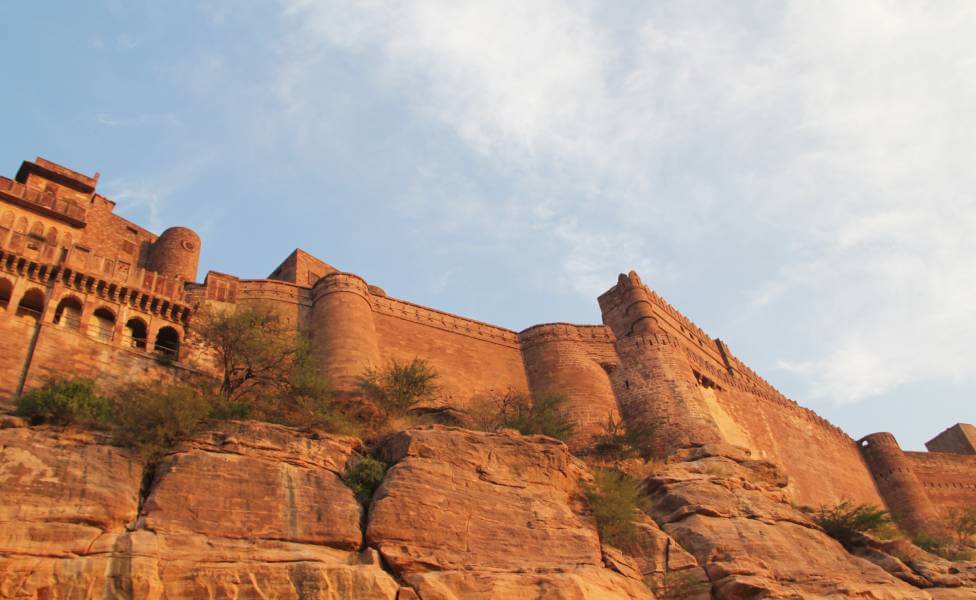
Perched on a cliff called Bahuchiriya, Mehrangarh is a 15th century royal fort in Jodhpur. Literally meaning ‘The Sun Fort’, Mehrangarh Fort is indeed one of the most popular big forts in India. Guarded by 7 gates, Mehrangarh fort was built primarily for military defence but inside the fort one can find some of the most beautiful palaces. The palaces have ornately decorated ceilings and walls.
It is estimated that 17 generations of Rajput rulers have reigned here and have added several structures like temples, palaces and courtyard yet not even one structure looks out of place as the blending has been skillfully done. The delicate carvings on the fort are also worth mentioning as despite the fragile nature of the sandstones used, the job of intricate carvings has been done so well. Mehrangarh is also one of the best preserved forts of India; and in order to be maintained, a part of it has been converted into a museum. Imposing and invincible, the fort has towers of about 120ft and its walls are 6m thick in place. This colossal fort led writers Rudyard Kipling saying that it is not a work of men but giants!
Best Time to Visit: October to March
Opening Hours: 9 AM to 5 PM
Places Nearby:
- Sheesh Mahal
- Phool Mahal
- Moti Mahal
- Zenana Deodi
- Chokelao Gardens
- Mehrangarh Fort Museum
- Chamunda Mataji Temple
- Nagnechi Ji Temple
Other Interesting Blogs to Read
Red Fort, Old Delhi: The Lal Qila

Built in 1648 as the fortified palace of Shahjahanabad, Red fort is indeed one of the most popular historical forts to visit in India. Named after its massive enclosing wall of red sandstone, the architecture of the fort is credited to architect Ustad Ahmad Lahori. The fort has four accesses that are strategically made in each direction, the famous one being the Lahori Gate.
Red Fort including the earlier Salimgarh fort occupies an area of 120 acres. Bastions mounted with domed kiosks at regular intervals, colossal entrance gates, octagonal towers, semi arch arcades and minarets make Red fort a majestic structure in Indian history. The mosaic work seen in almost all the structures in the fort complex is worth appreciating, in fact the entire fort is worthy of admiration for its tenacity of planned architecture.
Best Time to Visit: October to March
Opening Hours: 7 AM to 5:30 PM
Places Nearby
- Diwan-i-Aam
- Diwan-i-Khas
- Nahr-i-Behisht
- Rang Mahal
- Moti Masjid
- Hayat Bakhsh Bagh
- Blood Paintings Museum
- Archaeological and Indian War Museums
- Lahore Gate Entrance
Also Read
Gwalior Fort, Gwalior, Madhya Pradesh: The Gibraltar of India
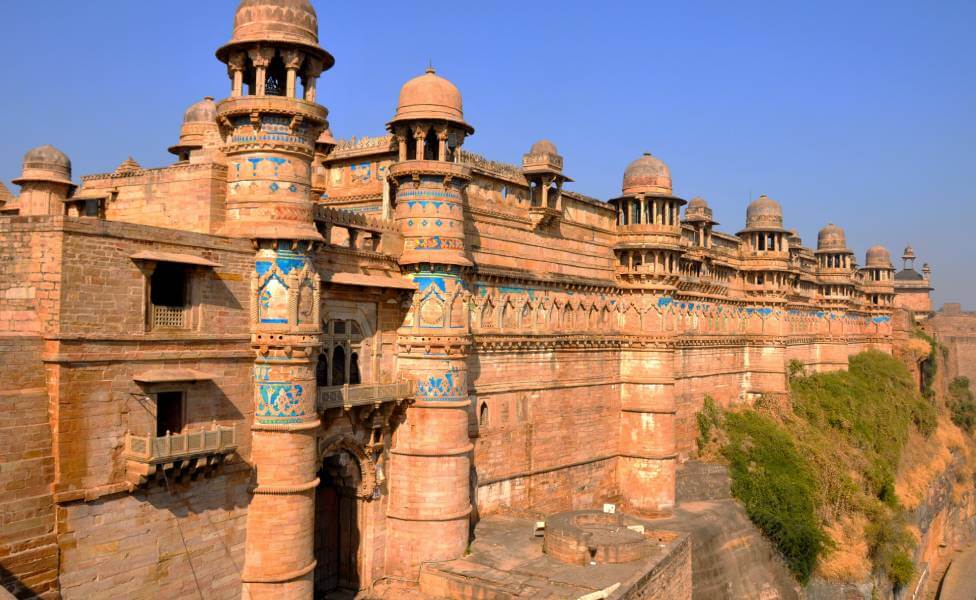
Ruled by almost 110 rulers from different dynasties, Gwalior Fort is profoundly steeped in history. The fort has been the witness of events like Tatya Tope fighting the British and Rani Lakshmi Bai breathing her last. One of the largest forts in India, Gwalior Fort is also the second oldest reference where the evidence of number ‘zero’ was found.
What surprises one here are giant Jain sculptures carved of the cliffs and rocks at the foot of the hill on which the fort is built on. Gwalior fort has some of the most dramatic sites and it begins the moment one enters the gate. The Man Singh Palace is amongst one of the most beautiful structures present in the fort complex. The architectural style of the palace is a perfect example of the blend of Mughal and Hindu along with a hint of Chinese architecture. The ceramic glaze tiles, beautiful motifs and intricate lattice work all contribute in making Gwalior Fort a very appealing monument in India.
Best Time to Visit: October to March
Opening Hours: 6 AM to 5:30 PM
Places Nearby
- Man Mandir Palace
- Teli-ka-Mandir
- Saas-Bahu Temple
- Gujari Palace
- Jahangir Palace
- Karan Palace
- Shah Jahan Palace
Also Read
Golconda Fort, Hyderabad, Telangana: The Acoustic Design

Getting its name from Golla Konda (Shepherds’ Hill), Golconda Fort is another popular heritage attraction in India. What makes Golkonda famous apart from this majestic fort was the fact that it was the centre of the diamond trade; the Kohinoor and the Hope Diamond are some of the famous ones excavated from the mines here.
Golconda actually had four forts enclosed by a 10kms long outer wall. The fort comprises 87 semicircular bastions, eight gateways, four drawbridges, a large number of royal apartments and halls, temples, mosques, magazines and stables. What fascinates the visitors to Golconda is the acoustic effect that can be experienced at Fateh Darwaza. Reflecting an excellent sense of engineering, this acoustic effect is about clapping hands at one place, the sound of which can be heard at a pavilion, which is almost a kilometre away.
Best Time to Visit: October to March
Opening Hours: 9 AM to 5:30 PM
Places Nearby
- Qutub Shahi Tombs
- Taramati Baradari
- Toli Masjid
- Naya Qila or New Fort
Also Read – Andhra Pradesh Complete Tourism Info
Jaisalmer Fort, Jaisalmer, Rajasthan: The Golden Fort

Often dubbed as Golden Fort, Jaisalmer Fort is probably one of the largest forts in India. This 12th century must-visit fort has been voted by visitors as a wondrous fort in Rajasthan. It is one of the largest desert forts in the world, and it is also known as the ‘Living Fort’ as a large population of Jaisalmer still lives within the fort.
It is believed that the fort has been made without using water, and definitely it is a marvel of architecture as construction seems impossible without water. The fort is 1,500 ft (460 m) long and 750 ft (230 m) wide and is perched on a hill of a height of 250 ft (76 m) above the surrounding countryside. The bastions of the fort form a chain about 30 ft (9.1 m) and the basement of the fort has 15 ft (4.6 m) tall walls that forms a double line of defence. Since a large number inhabit the fort’s premises, chances are that one will be able to learn and witness a lot here.
Best Time to Visit: October to March
Opening Hours: 9 AM to 5 PM
Places Nearby
- Dashera Chowk
- Maharawal in Chauhata Square
- Raj Mahal
- Tazia Tower
- Jain Temple
- Jawahar Palace
- Laxmikanth Temple
- Ganesh Pol
- Rang Pol
- Bhoota Pol
- Hava Pol
Also Read
Red Fort, Agra, Uttar Pradesh: The Agra Fort

Red Fort in Agra bears an exceptional testimony to the history of the Mughal Empire. Also known as Agra Fort, it was built in the year 1565 and during the reign of Akbar, the main part of the fort was made. This 94 acre semicircular fort is complimented with its lofty bastions, bastions at intervals, with battlements, embrasures, machicolations and string courses.
Similar to Delhi Fort, Agra Fort has two main entrances – Amar Singh Gate and Delhi Gate. The citadel has a large number of fairytale land like palaces and out of which Jahangiri Mahal is the example of Mughal architecture at its best. The palace has an interesting façade; it has arched portals, a series of ornamental porches and octagonal towers on either side.
There is a complex arrangement of rooms, halls, corridors and verandahs in the palace. Several of the buildings are made of marbles decorated with beautiful carvings; each monument matches the apogee of Indo-Muslim art. The fort also offers a distant view of the Taj Mahal from the second floor. One of the popular forts in India, Agra Fort is marvellous and indeed one place that must be visited in Agra.
Best Time to Visit: October to March
Opening Hours: 6 AM to 6 PM
Places Nearby:
- Amar Singh Gate
- Delhi Gate
- Jahangiri Mahal
- Moti Masjid
- Machchhi Bhawan
- Khas Mahal
- Diwan-i-Aam
- Diwan-i-Khas
- Bengali Mahal
- Ghaznin Gate
- Nagina Masjid
- Babur’s Baoli
- Shahjahani Mahal
Also Read
Kangra Fort, Kangra, Himachal Pradesh: Oldest Dated Fort in India
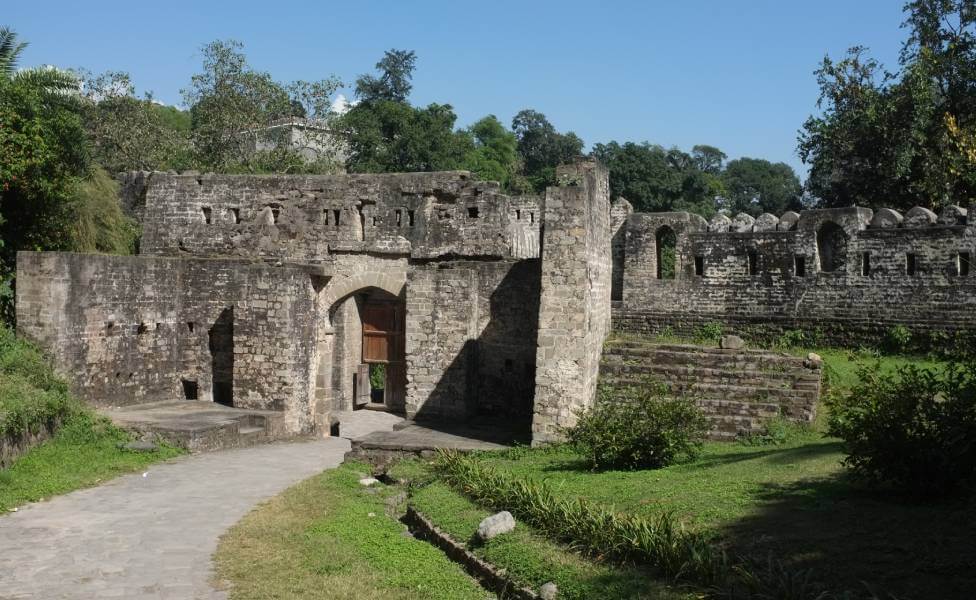
The Kangra Fort is located atop a hill situated at the confluence of Banganga and Patal Ganga River (also known as the Majhi), in the south western outskirts of the old Kangra town. One of the magnificent forts of India, Kangra Fort is the oldest fort of India, built in around 400 BC after the Mahabharat War by the Katoch King Susharma Chandra. The fort is also known by other names, Nagarkot and Kot Kangra. This isolated fort is magnificent and is amongst the best forts to visit in India.
Situated some 20kms from Dharamshala, Kangra Fort was first mentioned in the war records of Alexander the Great. The fort has been the pride and defence of the Katoch King. There are a number of temples and palaces that make a significant part of it. The shrines of Lakshmi-Narayana Sitala, Jain Temple and Ambika Devi are amongst the most famed ones here.
Best Time to Visit: March-June and October-November
Opening Hours: 9 AM to 7:30 PM
Places Nearby:
- Laxmi Narayan Temple
- Ambika Mata Temple
- Jain Temple
- Jayanti Mata Temple
- Maharaja Sansar Chand Katoch Museum
Also Read
Chittorgarh Fort, Chittorgarh, Rajasthan: Amongst Largest Hill Forts

The seat of Mewar rulers, Chittorgarh fort is a spectacular fort perched on a hill of 591ft of elevation. The fort is built on 280 hectares of land and is probably one of the most beautiful forts in Rajasthan. What makes the fort unique is the fact that it was self-sufficient in water with 84 large water bodies in the form of wells, ponds and step wells with the storage capacity of 4 billion litres of water.
However, there are only 22 water bodies remaining today. The fort comprises of Saat Pols or Gates and each has been built as massive stone structures with secure fortifications for the military. The reservoirs, chhatris, stambha, palaces and temples are the attractions of this fort. The fort is massive and considered one of the largest hill forts in India. Thus requires at least a day for a thorough tour.
Best Time to Visit: October to March
Opening Hours: 9 AM to 5 PM
Places Nearby:
- Padan Pol
- Bhairon Pol
- Hanuman Pol
- Jodla Pol
- Ganesh Pol
- Laxman Pol
- Ram Pol (Main Gate)
- Jorla Pol (Joined Gate)
- Vijaya Stambha
- Kirti Stambha
- Rana Kumbha Palace
- Fateh Prakash Palace
- Gaumukh Reservoir
- Padmini’s Palace
Also Read
Panhala Fort, Kolhapur, Maharashtra: Tales of Maratha Empire

Situated about 19kms from Kolhapur, Panhala Fort is amongst the biggest forts in Deccan. The fort has a perimeter of 14 km (9 mi) and 110 lookout posts and is at an elevation of 2,772 ft (845 m) above sea level. Panhala fort is built on the Sahyadris and it has numerous underground tunnels, out of which one is almost 1 km long.
The architecture of the fort is in Bijapuri style with the peacock motif of the Bahmani Sultanate visible prominently on several structures. Some of the older bastions also have the lotus motif of the time period of Bhoja II. There are several structures in the fort namely, Teen Darwaza, Wagh Darwaza, Andhar Bavadi, Kalavanticha Mahal, Ambarkhana, Dharma Kothi and Sajja Kothi that are the major attractions of Panhala fort.
Best Time to Visit: October to March
Opening Hours: Open 24 Hours
Places Nearby:
- Mausoleum of Jijabai
- Vir Shiva Kashid Statue
- Parashar Cavern
- Sajjikoti, Dharmkoti
- Andharbaw
- Teendarwaja, Wagh Darwaja and Konkan Darwaja
Also Read
Srirangapatna Fort, Srirangapatna, Karnataka: Tipu’s Fort
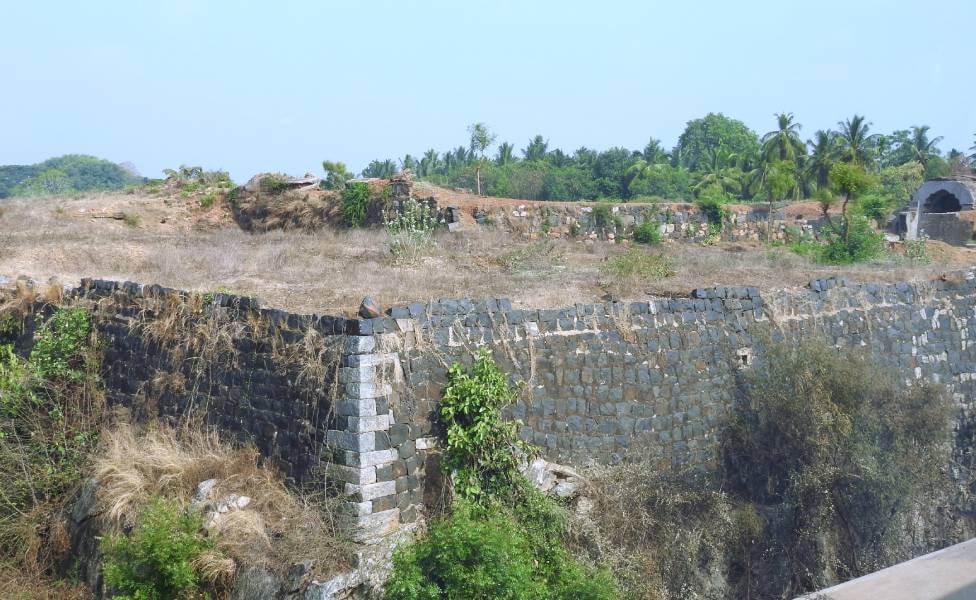
Built in the 15th century, Srirangapatna Fort is one of the outstanding monuments built during the Vijayanagar Empire. However, the most elaborate work was done in the fort during the reign of Tipu Sultan who was also called the Tiger of Mysore. Located in Srirangapatna, the fort is one of the best places to explore near Mysore, Karnataka.
This double-walled fort is built with massive granite blocks in this region. The fort is in a triangle shape and has 40 ft high walls on all three sides. Two important gateways – the Mysore Gate and the Elephant Gate – to the fort are on the side facing the highway. There are a number of military, religious and civic structures like Gumbaz, Ranganathaswamy Temple, Daria Daulat Palace or the Palace of Tipu Sultan and Masjid-e-Ala or the Juma Masjid.
Best Time to Visit: October to March
Opening Hours: 9 AM to 6 PM
Places Nearby:
- Lal Mahal
- Tipu’s Palace
- Ranganathaswamy Temple
- Narasimhaswamy Temple
- Juma Mosque
Amber Fort, Jaipur, Rajasthan: The Amazing Amer Fort
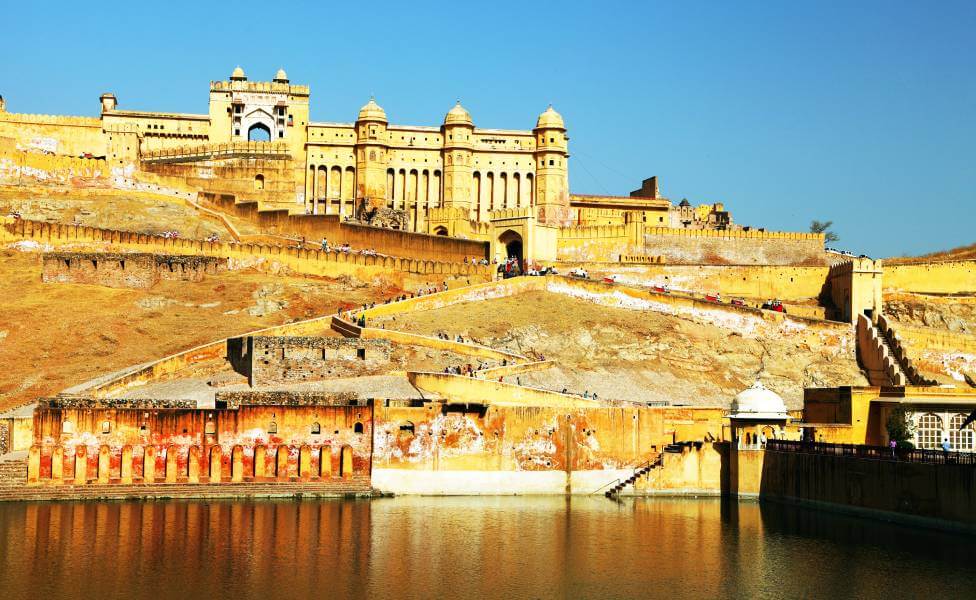
Between Delhi and Rajasthan, Amer Fort can rightly be called the Gateway to Rajasthan. The construction of the fort is said to have begun in the 10th century but it was completed in 1599. This imposing fort built on top of a hill has the record of never being conquered. Inside the fort are beautiful palaces and gardens, exquisitely painted and decorated rooms, hammams and terraces.
Sheesh Mahal, Diwan-e-Aam, The Summer Residence, Palace of Man Singh I and Sila Mata Temple are the major attractions of the fort. The fort is enriched with frescoes, Jaaliwork and mosaic work. Today, a state of the gallery also operates from inside the fort. A sound and light is now a permanent feature to attract the visitors. The Palace is divided into four main sections each with its own entry gate and courtyard. The main entrance is through the Suraj Pole (Sun Gate) which leads to Jaleb Chowk, the first main courtyard.
Best Time to Visit: October to February
Opening Hours: 9 AM to 6 PM
Places Nearby:
- Suraj Pol or Sun Gate
- Jaleb Chowk
- Sheesh Mahal
- Diwan-i-Aam
- Sukh Niwas
- Sila Devi Temple
- Baradari and Janana Mahal
Also Read
Daulatabad Fort, Aurangabad, Maharashtra: Devagiri Fort

Often complimented as an impregnable fort, Daulatabad fort is one of the finest forts in Maharashtra. Perched on a hill about 600 ft above the ground level, this fort is a testimony of the Tughlaq dynasty.
The fort has a massive courtyard, which has a number of cannons. Bharat Mata ka Mandir, of which the architecture suggests that it was a mosque and a temple too; The Chand Minar, an after-thought to the fort built by Alaudin Bahmani, the falls gates, built to confuse attackers and narrow curvy paths are the major attractions of Daulatabad fort. Apart from it, the maze that was built to confuse attackers is also the highlight of this fort. Daulatabad is indeed an interesting fort that should be visited in India.
Best Time to Visit: October to March
Opening Hours: 6 AM to 6 PM
Places Nearby:
- Chand Minar
- Chini Mahal or China Palace
- Fort Entrance
- Daulatabad Prison
Junagarh Fort, Bikaner, Rajasthan: Chintamani Fort
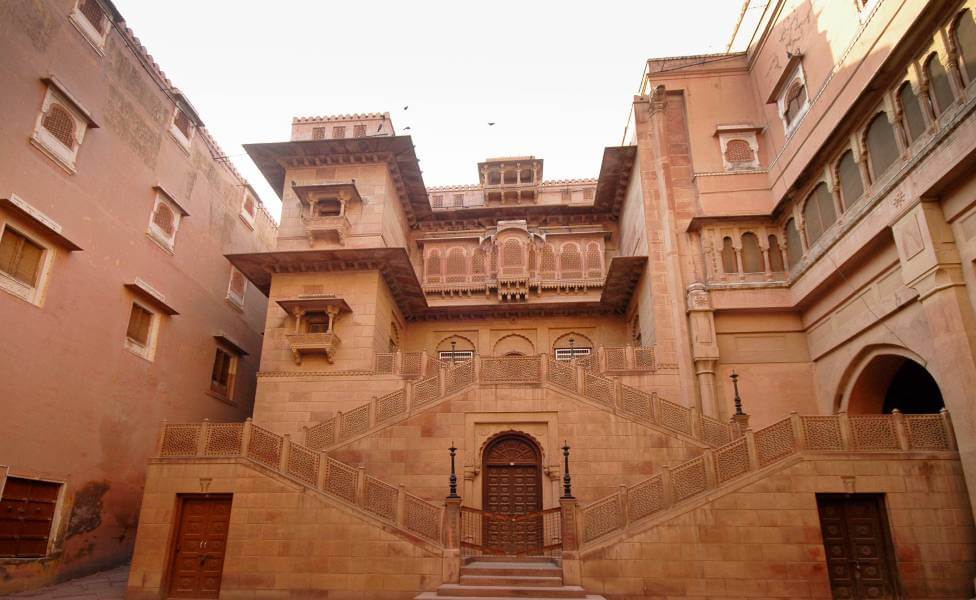
An impressive fort, Junagarh was built by Maharaja Rai Singh in 1588. Maharaja Rai Singh was a well-travelled individual and it is due to his experience that gave Junagarh Fort an exclusive look that is appreciated in the world of architecture. This massive rectangle shaped fort has walls that are 14.5 feet (4.4m) high and 40 feet (12m) wide. It encompasses an area of 5.28 hectares and was surrounded by a moat, which no longer exists.
The 37 bastions and seven gates made the fort impenetrable by the enemies. The fort has a number of palaces and temples, which are made of red sandstone (Dulmera) and marble. The palaces have an assortment of courtyards, balconies, kiosks and windows and they reflect the grandiose living style of the past Maharanas of Rajasthan. Often Junagarh Fort has been described as a paradox between mediaeval military architecture and meticulously done interior decoration.
Best Time to Visit: October to March
Opening Hours: 10 AM to 4:30 PM
Places Nearby:
- Karan Pol
- Suraj Pol
- Karan Mahal
- Phool Mahal
- Anup Mahal
- Chandra Mahal
- Ganga Mahal
- Badal Mahal
- Bikaneri Havelis
- Fort Museum
- Har Mandir Tempe
Also Read
Jhansi Fort, Jhansi, Uttar Pradesh: Jhansi Ka Kila
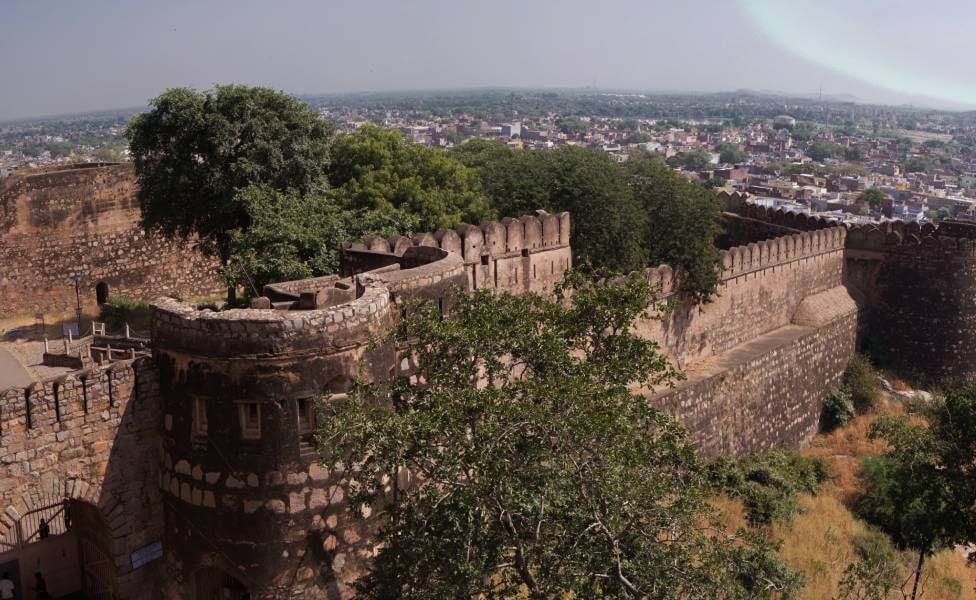
Once the stronghold of Chandela Kings, Jhansi Fort in Uttar Pradesh is one of its kinds when it comes to architecture. Perched atop a hill, Jhansi Fort has sturdy granite walls that are 16-20 feet thick and on the south side meet the city walls. There are as many as 10 gates that offer access to the fort.
Shiva Temple, Ganesh Temple at the entrance, and the Kadak Bijli cannon, which was used in the uprising of 1857, Rani Jhansi Garden, Dargah of Ghulam Gaus Khan, Moti Bai and Khuda Baksh are the major attractions of Jhansi Fort. The fort sprawls in a land of 15 acres (61,000 m2) and measures 312m in length and 225m in width. Like other forts, Jhansi Fort has also been a witness to the glorious era of Chandelas and as well as their defeat.
Best Time to Visit: October to March
Opening Hours: 7 AM to 6 PM
Places Nearby:
- Rani Mahal
- Archaeological Museum
- Panch Mahal
- Khanderao Gate
- Bhanderi Gate
- BaraGaon Gate
- Laxmi Gate
- Chand Gate
Also Read
Jaigarh Fort, Jaipur, Rajasthan: Cheel ka Teela
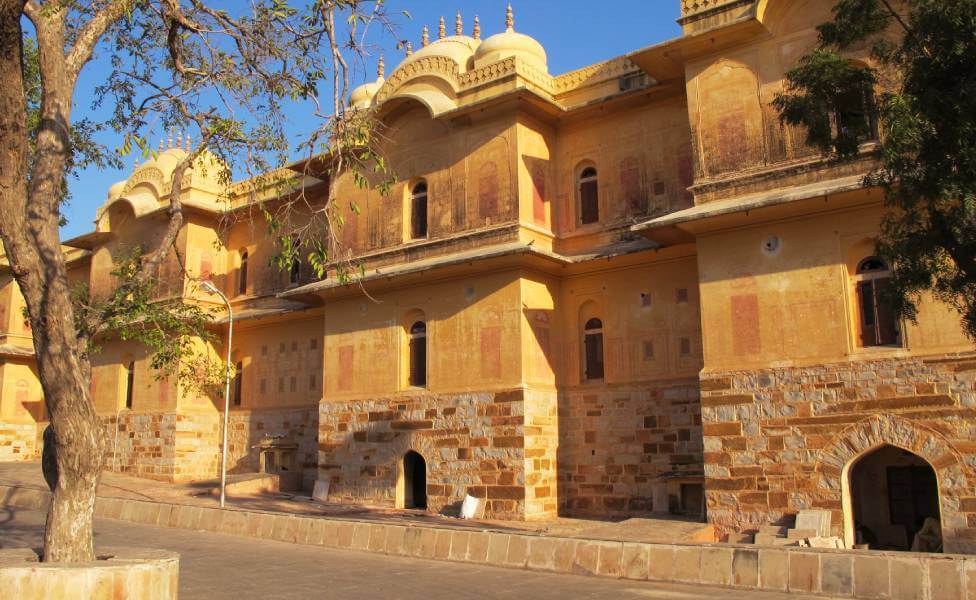
Overlooking the Amber Fort, Jaigarh Fort is one of the most stunning and majestic forts In India. Situated on a hill of Aravalli range, Jaigarh Fort was built by Raja Jai Singh II in 1726. Sprawling in the area of 3kms, Jaigarh is a massive fort that is most famed for its cannon foundry. Fortified with thick walls of red sandstone, the fort has a length of 3 kilometres (1.9 mi) and a width of 1 kilometre (0.62 mi); it also has an imposing square garden (50 metres (160 ft) square) enclosed.
There are a number of palaces that have court rooms and halls with screened windows. A central watch tower is also built on raised ground; it provides an excellent view of the surrounding landscape. The Aram Mandir, Ram Harihar Temple, the Kal Bhairav Temple, Awani Darwaza and Charbagh Garden are some of the attractions of Jaigarh Fort. Arched gateways painted red and yellow, cyclopean walls built with dressed stone and plastered with lime mortar, mosaic work, frescoes and lattice work make this fort a stunning place to witness.
Best Time to Visit: October to March
Opening Hours: 9 AM to 5 PM
Places Nearby:
- Aram Mandir
- Ram Harihar Temple
- Kal Bhairav Temple
- Awani Darwaza
- Charbagh Garden
- Jaivana Cannon
- Dungar Darwaza
- Awami Gate
- Fort Museum
Also Read
Nahargarh Fort, Jaipur, Rajasthan: Abode of Tigers
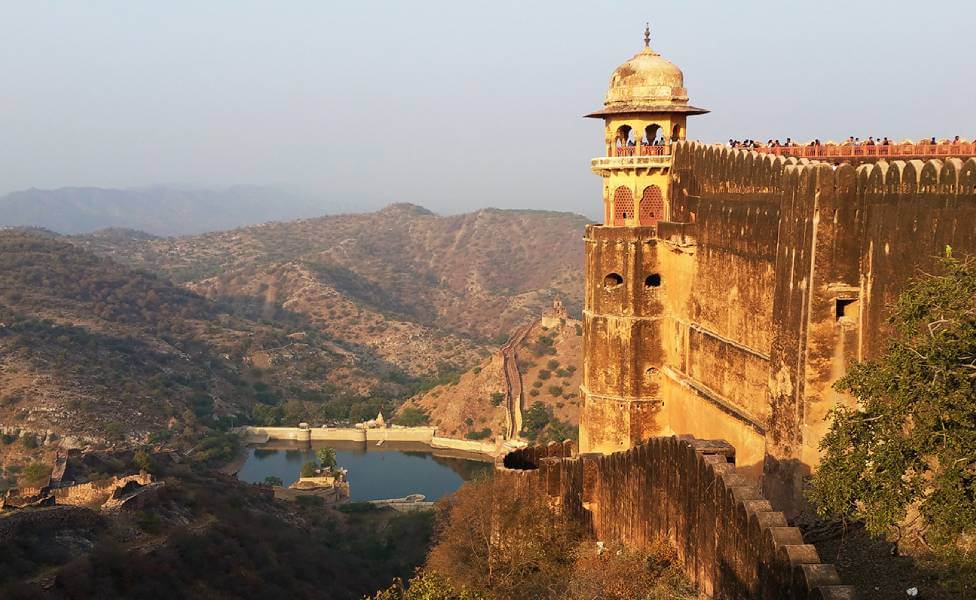
Amer, a gorgeous city, served as the Rajput people’s capital until Jaipur was designated as the state capital of Rajasthan. In the 1600s, the city was humming with activity and markets. Together with Amer Fort and Jaigarh Fort, Nahargarh Fort served as the defence for the former capital. Nahargarh is a city in the Aravalli hills that looks out over a lovely lake. At the summit of the fort, Padao, there is a food mall and a restaurant with a great view. The glass palace and Jaipur wax museum are now located inside the fort.
It was previously named Sudershangarh, then renamed to Nahargarh, which means ‘abode of tigers.’ Nahargarh Fort, one of the must visit forts in India, was built as a retreat on top of the ridge above the city by Maharaja Sawai Jai Singh, the ruler of Jaipur, mostly in 1734. In order to connect this fort to Jaigarh, the fort above the former capital of Amber, walls spanned the hills in the area.
Best Time to Visit: October to March
Opening Hours: 10 AM to 10 PM
Places Nearby:
- Glass Palace
- Wax Museum
- Sheesh Mahal
- Madhvendra Palace
Also Read: Must Visit Attractions in Jaipur
Warangal Fort, Warangal, Telangana: Emblem of Telangana

The Warangal Fort, the city’s primary draw, is dispersed over a 19-kilometre area between Warangal and Hanamkonda. During the rule of the Kakateya King Ganapati Deva in the 13th century, the fort was built. The beautiful and intricately carved pillars and arches of the Warangal fort are its most well-known features.
When the capital was moved from Hanamkonda, King Rudradeva began building on this Fort. His nephew Ganapati Deva continued to extend it, and Princess Rani Rudrama Devi finished it off. Invaders largely destroyed the fort, leaving just the remnants visible today. A tiny part in the fort’s core contains an open-air museum with Kakatiya architectural remnants, although the majority of the fort is covered in settlements. Here are the well-known stone gateways (known as Kirti Toranas), which are masterpieces carved from a single rock and are roughly 30 feet high and still standing.
Best Time to Visit: October to March
Opening Hours: 10 AM to 7 PM
Places Nearby:
- Open Air Museum
- Kush Mahal
- Shambulingeshwara Temple
- Ekasila Hill
- Kirti Toranas
- Kakatiya Kala Thoranam
Other Interesting Blog to Read
Sindhudurg Fort, Sindhudurg, Maharashtra: Shivaji’s Cenotaph
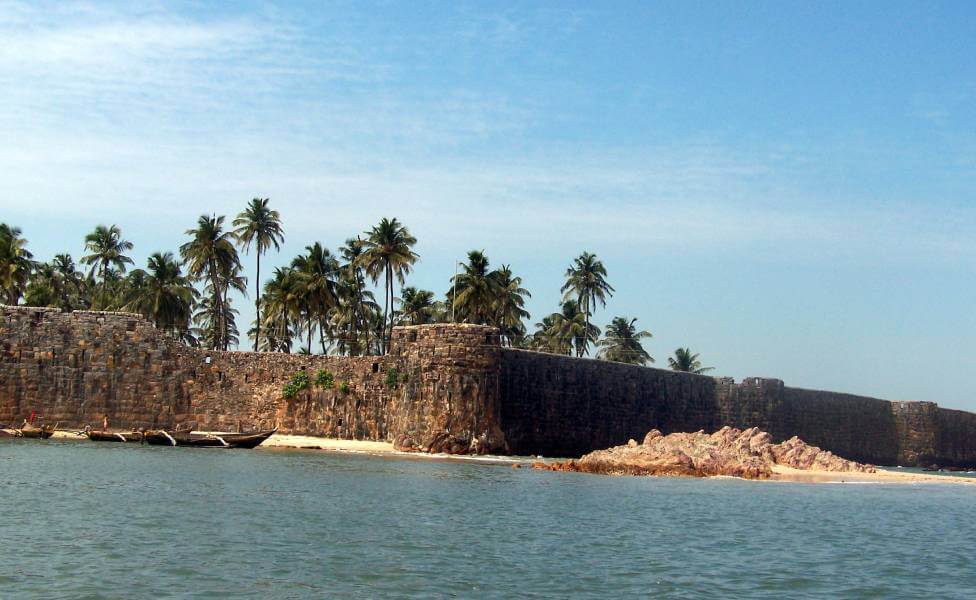
Shivaji, the Maratha Empire’s king in the seventeenth century, constructed the island-fort of Sindhudurg. Its primary goals were to combat the burgeoning influence of foreign merchants (English, Dutch, French, and Portuguese), as well as to check the spread of Janjira’s Siddhis. Hiroji Indulkar supervised construction in 1664. On a tiny island called the Khurte island, the fort was constructed.
Chhatrapati Shivaji Maharaj desired to establish a powerful fort in the Konkan Area because he understood the value of the navy in the Arabian Sea and coastal protection. He planned for this marine treasure, known as Sindhudurga, circa 1665 after numerous fruitless attempts to conquer Janjira of the Siddhis near Murud. For the Marathas, Sindhudurg serves as Shivaji’s cenotaph, and Shivaji Maharaj’s picture is revered in the city’s main temple. The temple preserves and keeps the hand and foot prints of Chhatrapati Shivaji Maharaj under miniature domes in devotion. There are a couple drinking water tanks in the fort.
Best Time to Visit: October to March
Opening Hours: 8 AM to 6 PM
Places Nearby:
- Jari Mari Temple
- Shri Bhavani Temple
- Shri Shiv Rajeshwar Temple
- Malvan Coast
Also Read: Top Monuments in India that Reflect Rich Culture and Heritage
Holkar Fort, Maheshwar, Madhya Pradesh: Ahilya Fort

Maheshwar Fort or Holkar Fort or Ahilya Fort is one of the popular forts in the list of top 10 famous historical forts of India. The fort is situated in the Madhya Pradesh town of Maheshwar, 1.5 km from Maheshwar Bus Station and one of the most popular tourist destinations in Madhya Pradesh.
Located on the banks of the Narmada River, Holkar Fort was built in the 18th century AD by the Holkar Dynasty. The fort is also referred to as Ahilya Fort or the Queen’s Fort since Rani Ahilya Bai Holkar, a well-known Malwa queen, previously called it home. Ahilya Wada, Maharani Ahilyabai Holkar’s house, offices, and darbaar hearing hall, were constructed inside the fort during her control over Maheshwar (1765–1796). In the year 2000, Prince Richard Holkar, the son of the last king of Indore, converted this place into a heritage hotel, which is known as Ahilya Fort Hotel.
Best Time to Visit: August to November
Opening Hours: 7 AM to 5 PM
Places Nearby:
- Shiv Temple
- Shahstra Dhara
- Narmada River
- Rajwada Palace
- Museum
Also Read: Heritage Tourism in Madhya Pradesh
Chitradurga Fort, Chitradurga, Karnataka: Picturesque Fort

In the Chitradurga District of Karnataka, India, the Chitradurga Fort, or Chitaldoorg as the British referred to it, is a stronghold that spans multiple hills and a summit overlooking a level valley. The town of Chitradurga and its administrative district share the fort’s name, Chitrakaldurga, which in Kannada means “picturesque fort.”
The Chalukyas and Hoysalas, as well as subsequently the Nayakas of Chitradurga of the Vijayanagar Empire, were among the dynasty rulers of the area who constructed the fort in phases during the 11th and 13th centuries. A system of seven concentric defence walls, a citadel, a masjid, storage facilities for grains and oil, water reservoirs, and ancient temples are all part of the fort’s construction. In the upper fort, there are 18 temples, while in the lower fort, there is one enormous temple. Two of the major attractions of the fort are Hidimbeshwara Temple and the masjid inside.
Best Time to Visit: October to March
Opening Hours: 6 AM to 5 PM
Places Nearby:
- Hidimbeshwara Temple
- Masjid
- Gopala Krishna Temple
- Lord Hanuman Temple
- Nandi Temple
- Murugarajendra Matha
Other Interesting Blog to Read
We sure hope, you had a great time reading this blog. You can help us with adding more to this list of big and popular forts in India.
In case you are planning a trip to one of these forts, we would be glad to help you plan your trip. Contact us at +91-9212777223 or email us at info@tourmyindia.com for more India tour packages.
Other Interesting Blogs to Read
Like & Follow our social media accounts at Twitter, Facebook, Linkedin & Instagram for getting the latest updates & offers on holiday packages.
Disclaimer: This content is written by our team of expert Travel Writers with deep research. In case you find any incorrect information or missing information, please do send your valuable inputs at webmaster@tourmyindia.com. We will update the content as soon as possible with respect to your inputs.
We do not take credit for some of the licenced paid images used in our blogs, whether from Google Images, Fotolia & Shutterstock. All such images are the copyrights of their respective owners and we try to provide credit for them wherever we can. If, however, any copyright image has been used on our blog, the concerned person can either mail us directly to remove the image or provide credit to whomsoever the image may belong to.
Frequently Asked Questions
Which is the biggest fort in India?
Chittorgarh Fort or Chittod Fort, is the biggest fort in India. It is located in the City of Chittorgarh in Rajasthan. It is also Asia’s largest fort.
Which is the oldest surviving fort in India?
Qila Mubarak located in Bathinda, Punjab, which was built between 90 and 110 CE, is the oldest surviving fort in India.
Which are the most popular forts in India?
Some of the most popular forts in India are:
- Red Fort, Delhi
- Agra Fort, Agra
- Jaigarh Fort, Rajasthan
- Mehrangarh Fort, Jodhpur, Rajasthan
- Jaisalmer Fort, Jaisalmer, Rajasthan
- Amber Fort, Jaipur, Rajasthan
- Golconda Fort, Hyderabad, Telangana
Which state has the largest number of forts?
Rajasthan has the largest number of forts in India. Some of the famous forts in Rajasthan are:
- Mehrangarh Fort
- Jaigarh Fort
- Jaisalmer Fort
- Chittorgarh Fort
- Junagarh Fort
- Amber Fort
- Nahargarh Fort
Which is the oldest fort of Rajasthan?
Ranthambore Fort, located in Sawai Madhopur is the oldest fort of Rajasthan.
About the author
From the Lake District, Nainital, Nidhi Singh is a travel writer whose love for mountains can be seen in her write ups. Talk about solo travelling, indulging in adventure activities, binging on good food, planning budget trips or the Aurora Borealis and you will get all her attention. It is the wanderlust that keeps her going and if at all she could get one wish granted she would love to live a life less ordinary. Follow her on Twitter, Facebook & Instagram.

 +91-9212777225
+91-9212777225 Plan Your trip
Plan Your trip